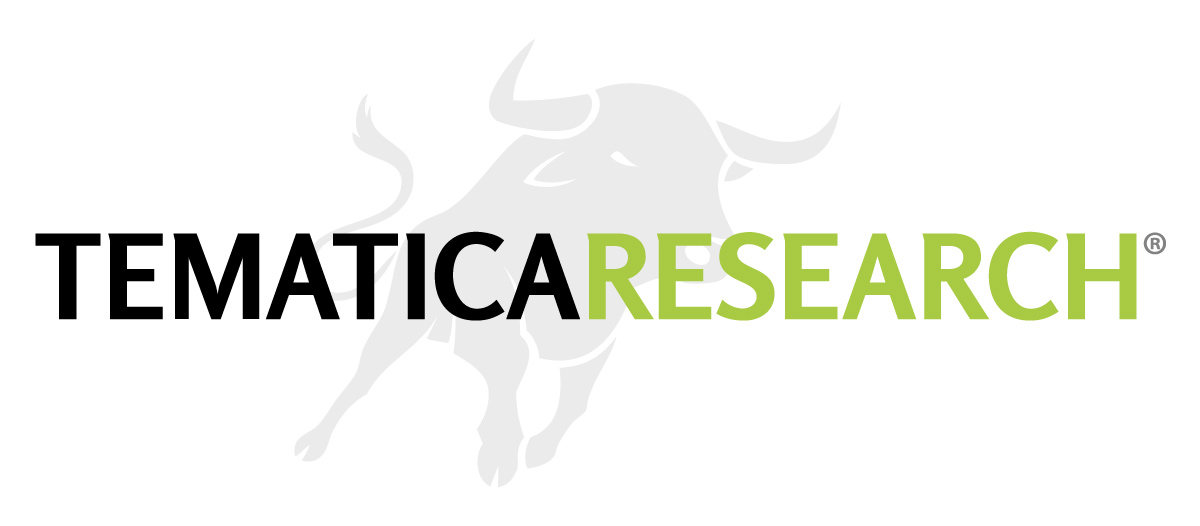Putting on Some Athletic Kicks and Grabbing Another Shot of Java Calls
In yesterday’s Tematica Investing, we mentioned there was a robust number of data points to be had before the end of this holiday shortened week. In the last 24 hours, we’ve gotten the May PMI manufacturing reports from what we call the four horsemen of the global economy: China, Japan, the eurozone and the U.S. All four of these reports posted month-over-month declines with the “pace of new business” — or as we like to call it, orders. — in some cases the declines could be considered more of an “easing”, while others see orders falling quickly:
- China: May’s PMI published by Caixin/Markit slipped to 49.2 from April’s 49.4, marking the 15th month below the expansion/contraction line of 50.
- Japan: May’s headline PMI fell to 47.7 from 48.2, with both production and new orders posting sharp sequential declines.
- Eurozone: The final May manufacturing PMI came in at 51.5, down slightly from 51.7 in April, due to new export order growth hitting a 16-month low. What caught our eye the most was this comment in the Markit report:
New orders grew at the slowest rate for over a year as demand showed signs of waning both within the euro area and further afield. Not surprisingly, companies remain reluctant to build capacity and take on extra workers, lacking signs of any imminent upturn in demand.
- U.S.: The May manufacturing PMI reading dipped to 50.7 from Aprils 50.8, but below that headline, new business growth fell to its weakest level in 2016. In our view, the following comment from Markit encapsulates the U.S. data rather well:
Manufacturers cited a range of factors acting to dampen client spending, including weak capital investment across the energy sector, uncertainty related to the presidential election and generally subdued economic conditions. Added to this, a marginal drop in export sales also weighed on overall new business growth in May.
In simpler words, manufacturing continues to be a drag on the overall domestic economy and the data do not point to a rebound near term.
With these four countries setting the tone of the global economy, it comes as little surprise that JPMorgan’s Global Manufacturing PMI, which it produces in conjunction with Markit, as well as the Institute for Supply Management and IFPSM, fell to a reading of 50.0 in May from 50.1 in April. On a global basis, the report shows that output, orders and exports all fell month over month, with exports contracting for yet another month.
So what does this tell us?
We are likely to see current-quarter GDP forecasts ratcheted back some. Today’s May ISM Manufacturing Index and its sister report for services, due out later in the week, will give a better indication as to what the degree of that revision could be. For those watching the Fed and thinking about a possible June rate hike, the data out yesterday, today and tomorrow (when we get the May Employment Report) are likely to give Janet Yellen and the other Fed heads ample cover to wait a bit longer.
Good for dividend-paying stocks like the ones in our recently added Consumer Discretionary Select Sector SPDR Fund ([stock_quote symbol=”XLY”]) positions as well as REITs and utilities, but not good for financials or those counting on the additional push for a stronger dollar.
As the market tends to get some indigestion when it comes to the Fed and how it interprets Fed comments, we will continue to keep ProShares Short Russell 2000 ([stock_quote symbol=”RWM”]), ProShares Short Dow30 ETF ([stock_quote symbol=”DOG”]) and ProShares Short S&P500 ([stock_quote symbol=”SH”]) on the Tematica Pro Select List.
Getting into the game with Under Armour Calls
Earlier this week, Under Armour ([stock_quote symbol=”UA”]) trimmed its 2016 guidance to reflect what we can only call stepped up bankruptcy proceedings at The Sports Authority. More specifically, due to The Sports Authority’s proceeding with liquidation sales rather than Chapter 11 bankruptcy, UA now expects to only “recognize $43 million of the originally planned $163 million in revenues with The Sports Authority for 2016.” As a result, UA now sees 2016 revenue of $4.925 billion vs. the existing 2016 revenue guidance of $5 billion.
Clearly the market has been expecting an adjustment of this sort as UA shares fell just over 17 percent in May alone. While the company’s shares were hit on the news, it was far more muted than we’ve seen on similar bad news from other companies.
Reading between the lines, we see the $75 million cut vs. the $120 million Sports Authority shortfall indicating expected share gains in the back half of 2016, as new footwear and apparel hits a growing number of locations. We’d also note that even after accounting of the revised outlook, at 24% UA’s 2016 revenue growth is clocking well within the company’s multi-year target.
That bullish outlook was confirmed by data from SportScanInfo that showed strong athletic footwear growth year over year during the last month. The data showed a rebound in basketball shoes (up 15.4% year over year in the last four weeks), casual athletic footwear (up 23.0%), and walking/toning (up 17.2%), with increases in all other categories except Training/Fitness.
Digging into the numbers, UA continued to gain share as its footwear sales were up nearly 100% over the last four weeks compared with year-ago levels and compared to 3.9% for Nike ([stock_quote symbol=”NKE”]) over the same period. We’d note that was before the debut this past weekend of the new Curry 2.5 shoes at Foot Locker ([stock_quote symbol=”FL”]), an expanding relationship for UA.. With a price point at $134.99, the Curry 2.5 should help UA’s attack on the premium athletic footwear market as should the fall release of the Curry 3.0 line and other footwear models. (Steph Curry taking on LeBron James in the NBA Finals, which starts tonight, can only help too — assuming it pans out as expected to be an epic series.)
With a longer term view, we see The Sports Authority situation as a bump in the road for UA and its shares as it continues to execute on expanding its athletic footwear and women’s merchandise in more locations in the US and abroad. Pretty much the Nike playbook that is bolstered by UA’s rising brand, which makes it a Rise & Fall of the Middle Class company.
In the shorter-term, we see the pullback in UA shares as overdone and while it may be a few days until the shares settle down completely, we’re issuing a BUY rating on Under Armour UA Oct 2016 40.000 calls (UA161021C00040000) that closed last night at $1.85 . We would hold off buying these calls past $2.25 and we’re setting a stop loss to limit potential downside in what could be a volatile June market at $1.00.
Updates, Updates, Updates
Consumer Discretionary Select Sector SPDR Fund (XLY) & Calls
Monday’s Personal Income & Spending report that showed one off the strongest headline prints in Personal Spending in several years helped lift our recently added Consumer Discretionary Select Sector SPDR Fund (XLY) shares pushing them to $79, above the strike price of our XLY Dec 2016 78.000 call (XLY161216C00078000) calls.
Given the respective buy-in prices from last week, we’re up modestly in both and with the XLY Dec $78 calls bumping up against the $4.40 ceiling at which we’d no longer be adding to the position, we’ll hold steady near-term and look to use any weakness to improve our cost basis. We continue to have a stop loss at $2.30, however, as the XLY calls trend higher we’ll look to boost that stop loss.
Starbucks (SBUX) Calls
We shared a deeper dive on Starbucks (SBUX) shares yesterday when we added SBUX shares to the Tematica Investing Select List. One of the key drivers behind that addition was the more pervasive drop in key inputs than just coffee. After adding Starbucks (SBUX) Oct 2016 60.000 call (SBUX161021C00060000) last week at $1.00, the calls have moved lower and closed last night at $0.77. Given the benefits to be had from these cheaper input costs, which have only continued to fall, we’re going to use that price drop to improve our position in the SBUX calls. As such, we are ADDING to our Starbucks (SBUX) Oct 2016 60.000 call (SBUX161021C00060000) this morning and dropping our protective stop loss to $0.50 from $0.70.
Costco Wholesales (COST)
Our Costco Wholesales (COST) shares continued to climb over the last several days following the better than expected earnings report last week. An upgrade from Goldman Sachs (GS) yesterday to Buy from Neutral put the spotlight on the shares, which we continue to see as a core Cash Strapped Consumer company. Candidly, the Goldman note was pretty much a retread of our investment thesis on the shares, and Goldman’s price target on COST shares is $175 price target on Costco shares.
Late last night, Costco shared it’s May same-store-sales results: $9.23 billion for the month of May, an increase of three percent from $8.98 billion last year. In looking at Costco’s comparisons, the correct view strips out volatile gas and foreign exchange, and in doing so we find the company’s same-store-sales rose 4 percent year over year in May, with the US up 4 percent, Canada up 6 percent and Other International up 3 percent.
As we have seen the last few months, the soon to be published May Retail Sales Report should help put context and perspective around these Costco figures, painting them in a better light compared to the overall retail environment. We will continue to monitor COST shares with an eye to add an option position in order to capture greater upside.
Recap of Actions from this week:
- Continue to hold ProShares Short Russell 2000 (RWM), ProShares Short Dow30 ETF (DOG) and ProShares Short S&P500 (SH).
- Issuing a BUY rating on Under Armour UA Oct 2016 40.000 calls (UA161021C00040000) that closed last night at $1.85 up to a price of $2.25. Set a stop loss at $1.00.
- Adding to our Starbucks (SBUX) Oct 2016 60.000 call (SBUX161021C00060000) which closed last night at $0.77 and dropping our protective stop loss to $0.50 from $0.70.
- Continue to hold our Costco Wholesales (COST) position, with an eye to add an option position in order to capture greater upside.




